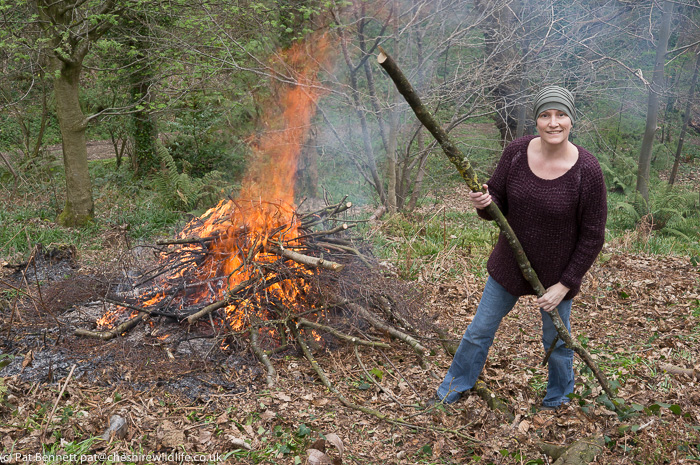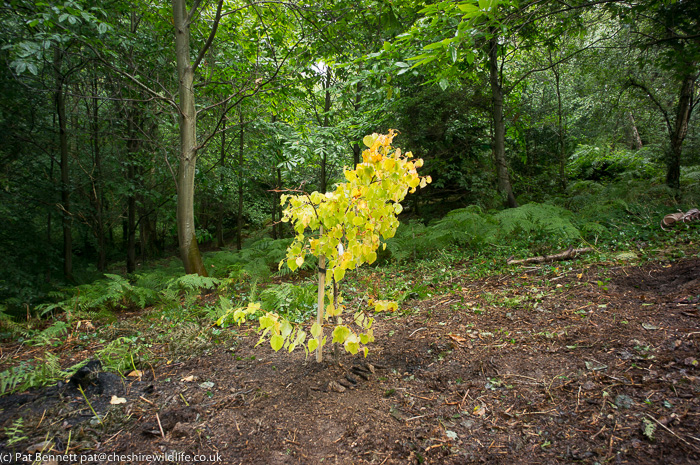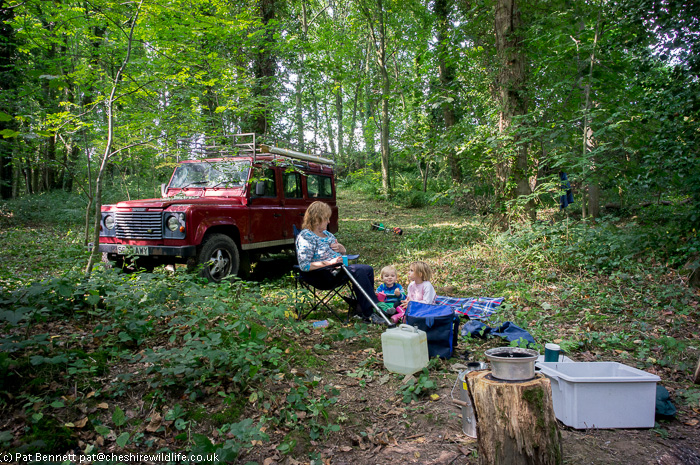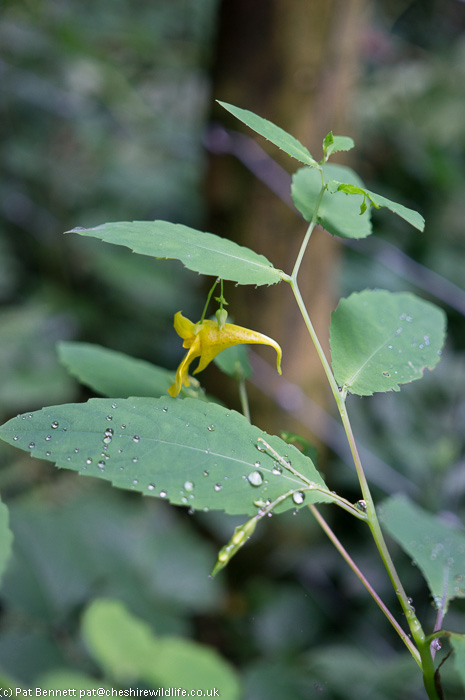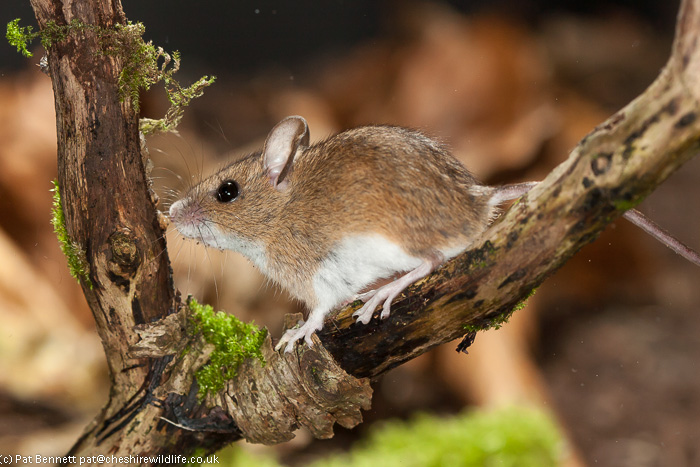
Throughout the wood, small holes in the ground show the ubiquitous presence of wood mice. I first found them on one of my camera traps by the pathway along the ridge which marks the southern boundary of our wood.
Scooting around amongst the young bracken in Spring, they looked like remotely controlled model cars , with headlights shining in the dark.
A bit later, I set up a camera on the huge mouldering trunk of a fallen tree at the edge of the wood, bordering farmland. This camera was very busy, as woodmice scampered all over its surface at intervals throughout the night.
In fact, any camera close enough to the ground seems to pick up woodmice, their numbers befitting their status at the bottom of the food web.
This clip probably illustrates the point. The camera takes a second after detecting a subject before it starts to record the video, so it was probably triggered by the tawny owl pouncing on its prey, recording only the aftermath.
I think that on this occasion the mouse got away, as the owl seems to have nothing in its bill or talons.
